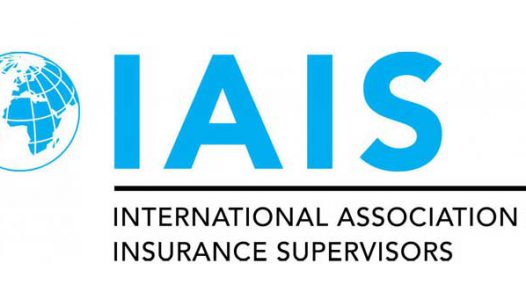The International Association of Insurance Supervisors (IAIS) has completed the first year of monitoring for the Insurance Capital Standard (ICS). The ICS aims to provide a globally comparable risk-based measure of capital adequacy of International Active Insurance Groups (IAIGs) and a common language to facilitate effective supervisory discussions of group solvency. The ultimate goal is a single ICS that includes a common methodology by which one ICS achieves comparable, ie substantially the same, outcomes across jurisdictions. The IAIS Executive Committee (ExCo) recently reviewed results from the 2020 ICS data collection and agreed to progress the 2021 ICS data collection with a small number of revisions to address issues that were identified through the data analysis and from the feedback received in the first year of the monitoring period. In June, the IAIS will publish the updated ICS specifications for the second year of the monitoring period.
“We are pleased that despite the operational challenges of 2020, the first year of the ICS monitoring period has been effective and has allowed for meaningful feedback and analyses to support IAIS discussions on ICS performance,” said Vicky Saporta, IAIS ExCo Chair. “With the completion of the first year of monitoring, we have taken another step towards our ultimate goal of a single ICS.”
During this initial year of monitoring, the IAIS has for the first time received feedback resulting from discussions amongst group-wide supervisors (GWS) and supervisory colleges about ICS performance. This substantial and helpful feedback will contribute to further improvements and planning for the second year of the monitoring period.
Thirty-nine volunteer groups participated in the first year of the ICS monitoring period despite the extreme challenges of Covid-19. Additional volunteer groups will participate in 2021. The IAIS continues to encourage participation across different jurisdictions and business models to ensure that the ICS captures risk appropriately for all IAIGs. IAIS member supervisors remain collectively committed to make participation as large as possible over time.
The Covid-19 pandemic has provided a valuable lens through which to assess the performance of the ICS and evaluate the importance of a global insurance standard in periods of global stress. To better understand the potential impact of Covid-19 on ICS performance, the IAIS collected a stressed balance sheet based on actual holdings at end March 2020, along with year-end 2019 data. Further observations from the stressed conditions of 2020 will provide valuable information for any further refinements of ICS.
Concurrently, the IAIS recently completed a public consultation on a draft definition of comparable outcomes and high-level principles to inform the development of the criteria that will be used to assess whether the Aggregation Method (AM), being developed by the US and other interested jurisdictions, provides comparable outcomes to the ICS. If deemed comparable, the AM will be considered an outcome-equivalent approach for implementation of the ICS as a prescribed capital requirement (PCR1 ). Despite a delay in the public consultation due to the Covid-19 pandemic, feedback was received from a number of stakeholders and is currently being reviewed by the IAIS.
“Accelerating global risks demonstrate the importance of a common language for supervisory discussions of group solvency of IAIGs,” said Jonathan Dixon, IAIS Secretary General. “The IAIS is committed to delivering an ICS that is fit for implementation by supervisors by 2024.”
About the ICS
The Insurance Capital Standard (ICS) aims to provide a globally comparable risk-based measure of capital adequacy of International Active Insurance Groups (IAIG). The ultimate goal is a single ICS that includes a common methodology by which one ICS achieves comparable, ie substantially the same, outcomes across jurisdictions.
Approved in November 2019, ICS version 2.0 will be used during a five-year monitoring period (2020-2024) for confidential reporting to group-wide supervisors (GWS) and discussion in supervisory colleges. During the monitoring period, the ICS results will not be used as a basis to trigger supervisory action.
The goal for the current phase of ICS development (ICS Version 2.0) is the delivery of a capital standard that is fit for implementation by supervisors. The implementation of the ICS will be conducted in two phases: (1) a five-year monitoring period (2020-2024) during which the ICS will be used for confidential reporting to the GWS and discussion in supervisory colleges; and (2) implementation of the ICS as a group-wide PCR. The performance of the ICS will be assessed during the monitoring period, so that the ICS adopted as a PCR will be a global supervisory tool that builds mutual understanding and a common language for discussions among group-wide and host supervisors.
ICS is the quantitative component of the Common Framework for the Supervision of IAIGs (ComFrame). ComFrame is a comprehensive and outcome-focused framework aimed at facilitating effective group-wide supervision of IAIGs, by providing qualitative and (in a future phase) quantitative supervisory minimum requirements tailored to the international activity and size of IAIGs. This should help supervisors address group-wide risks and avoid supervisory gaps. One of the main objectives of ComFrame is to support coordination of supervisory activities between the GWS and other involved supervisors.
About the ICS monitoring period
The performance of the ICS will be monitored and assessed during this five-year period (2020-2024). The purpose of the monitoring period is to monitor the performance of the ICS over a period of time, and not the capital adequacy of IAIGs. For this purpose, the monitoring period is intended to be a period of stability for the reference ICS. This does not preclude possible clarifications/refinements and correction of major flaws or unintended consequences identified during the monitoring period to improve the ongoing development of the ICS.
The feedback received during the monitoring period will be used to further improve the ICS. In addition to the feedback from supervisors, the IAIS will consider feedback from stakeholder engagement, a public consultation and the results of an economic impact assessment, all of which could result in changes to ICS Version 2.0. During the monitoring period, the IAIS intends to maintain the same level of engagement with stakeholders as it had during field-testing.
About the Aggregation Method
The United States and other interested jurisdictions are developing an Aggregation Method (AM) to a group capital calculation. Although this is not part of ICS Version 2.0, the IAIS appreciates the significance of this development and therefore is helping to collect data from the US and other interested jurisdictions that will aid in the development of the AM. The IAIS aims to be in a position by the end of the monitoring period to assess whether the AM provides comparable outcomes to the ICS. If deemed comparable, the AM will be considered an outcome-equivalent approach for implementation of ICS as a PCR.
About IAIGs
To date, 48 IAIGs have been identified by relevant group-wide supervisors (GWS) from 16 jurisdictions. Of those 48 IAIGs, the identity of 40 IAIGs has been publicly disclosed by relevant GWS from 14 jurisdictions. This register of publicly disclosed IAIGs can be found on the IAIS website. The active participation of IAIGs in the monitoring period is very important to provide effective feedback on the ICS (covering both the reference ICS and, if applicable, additional reporting at the discretion of the GWS).
Source: IAIS





